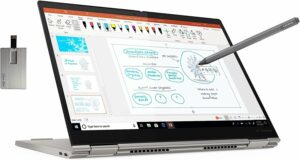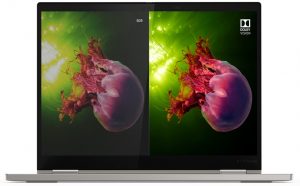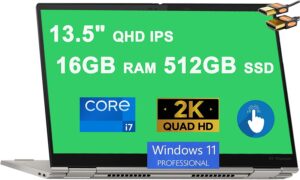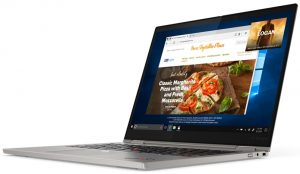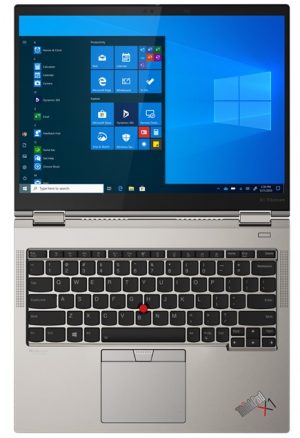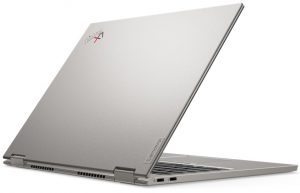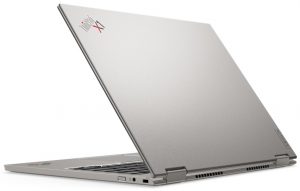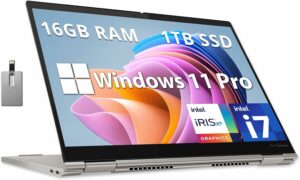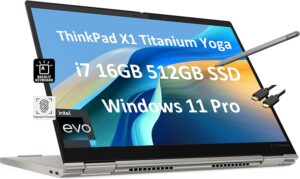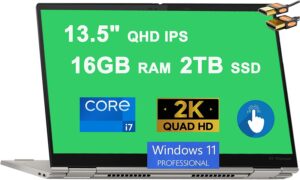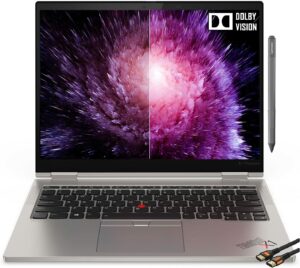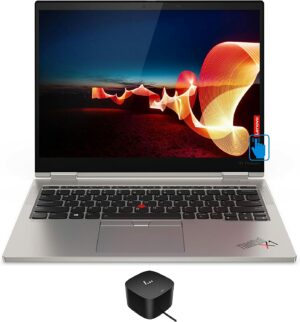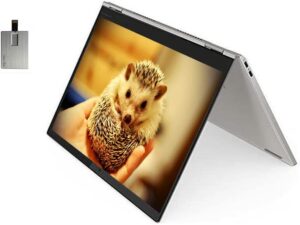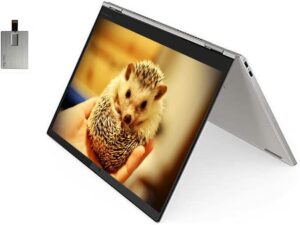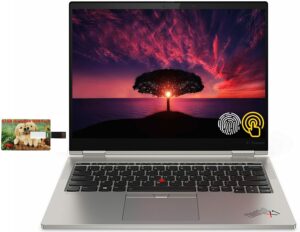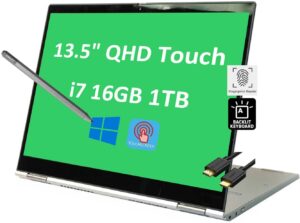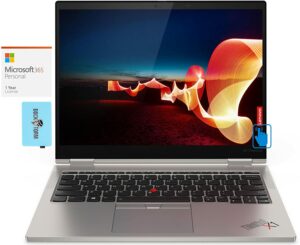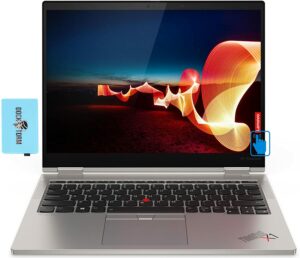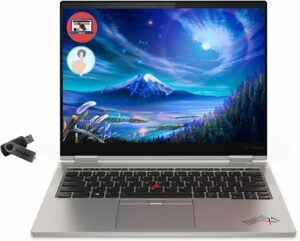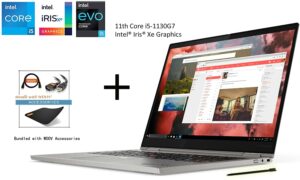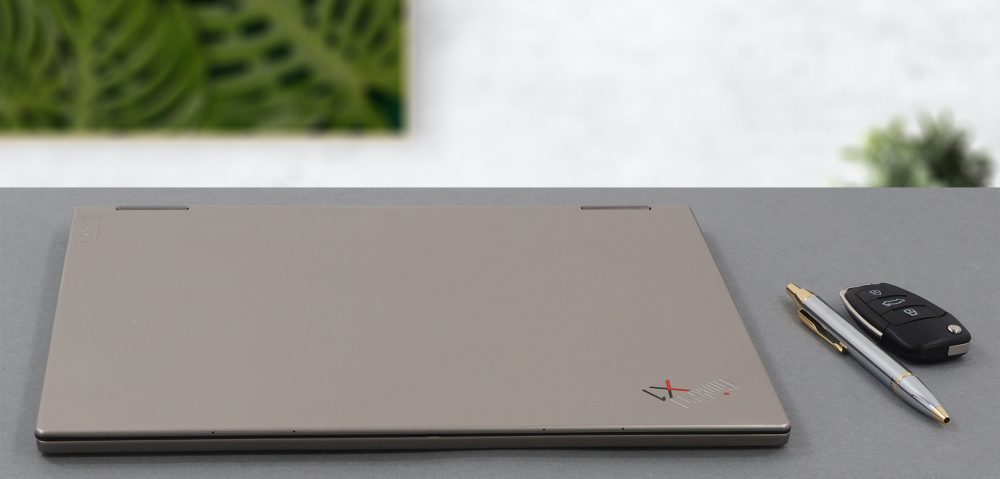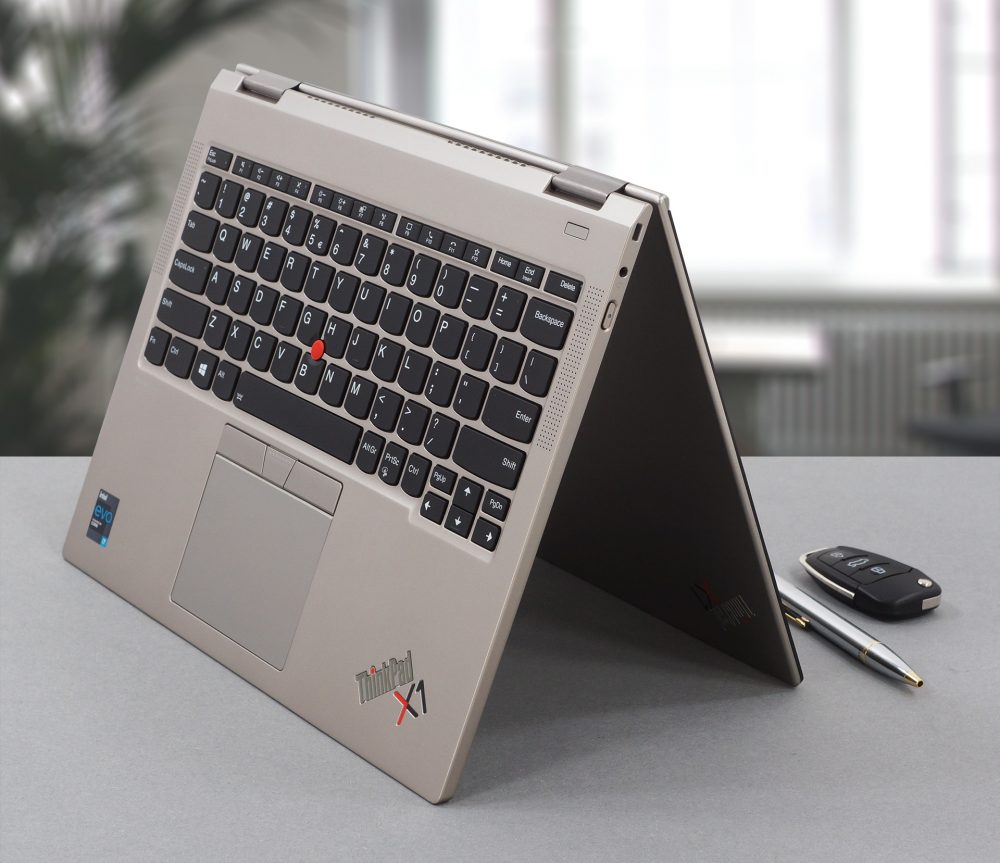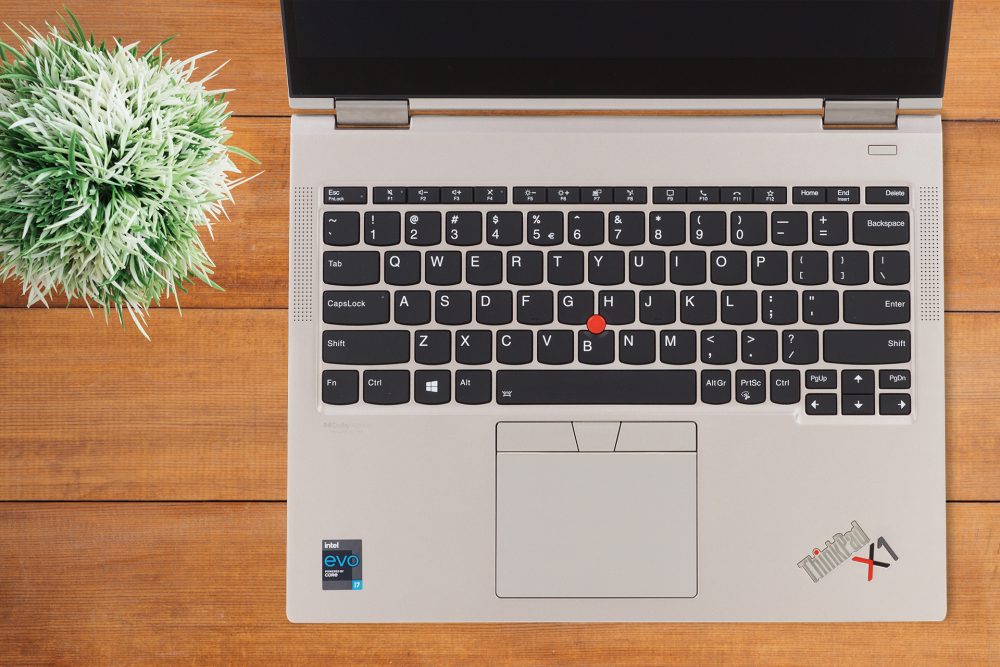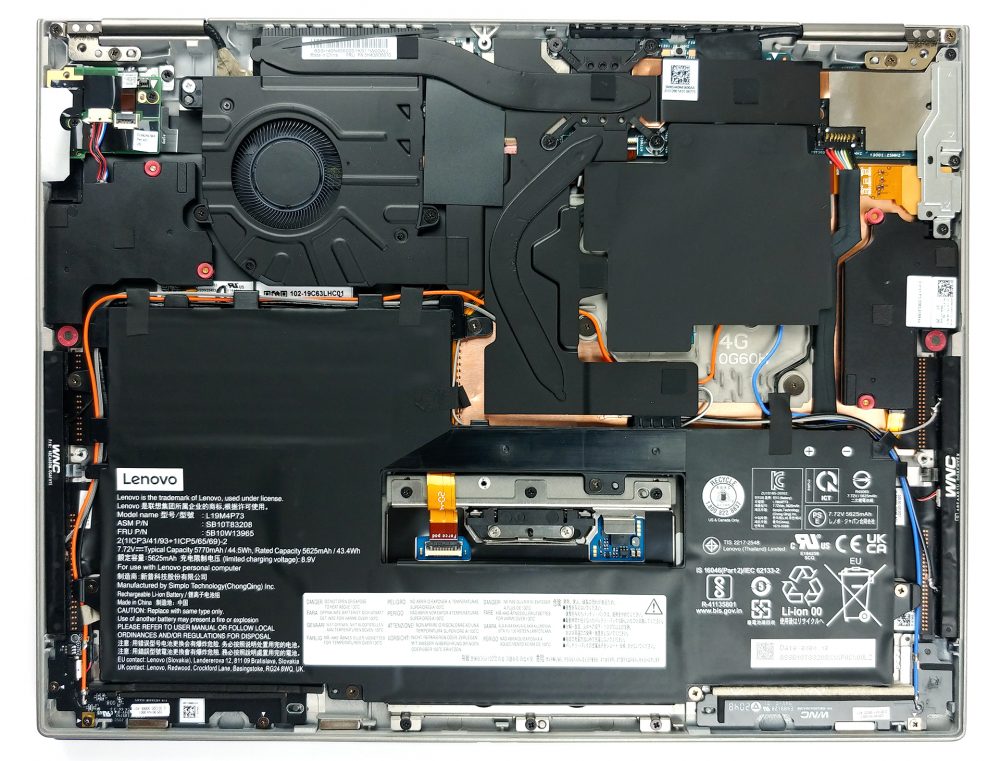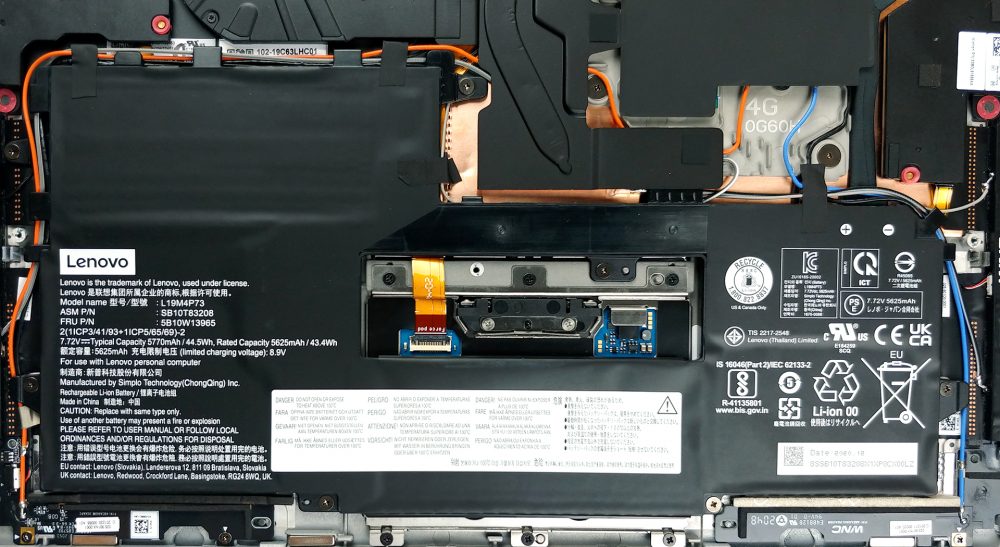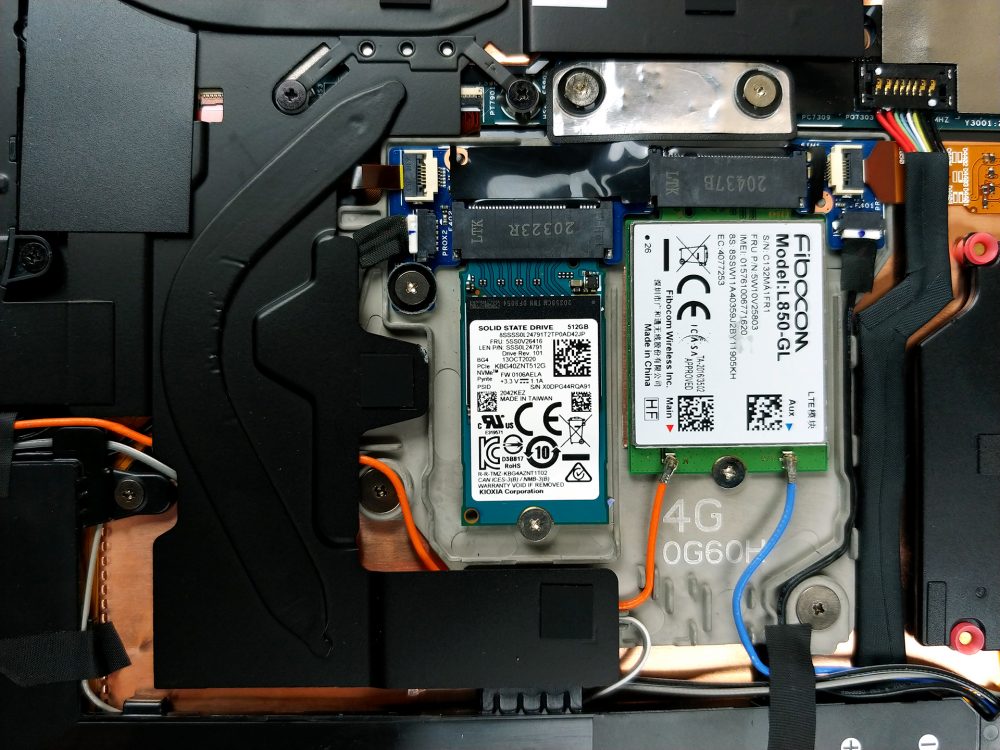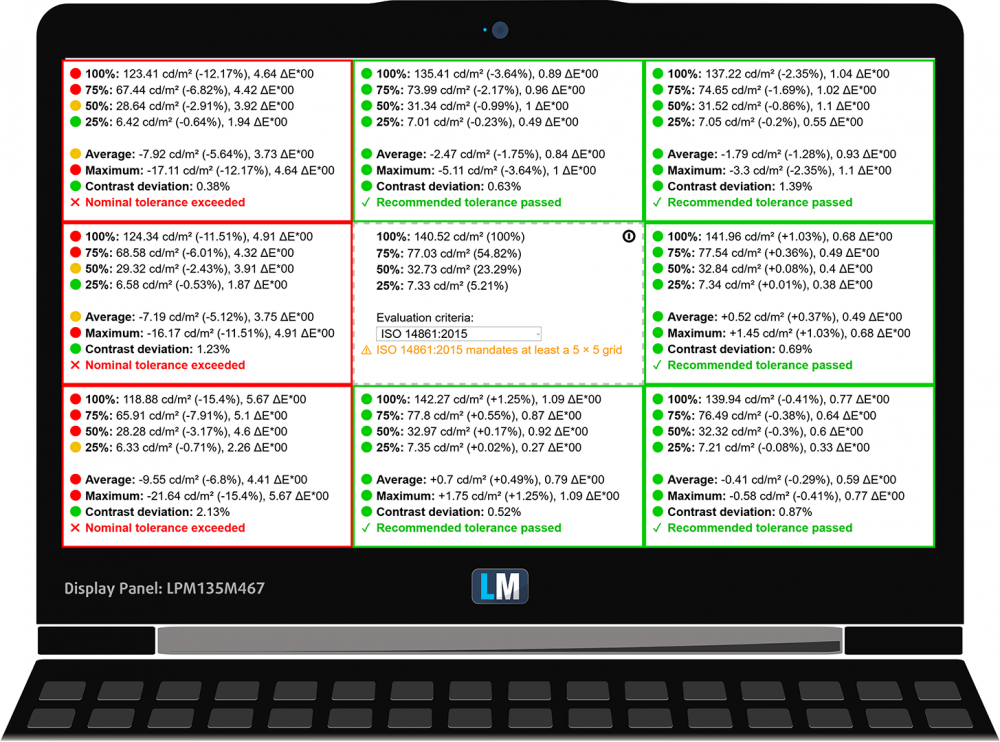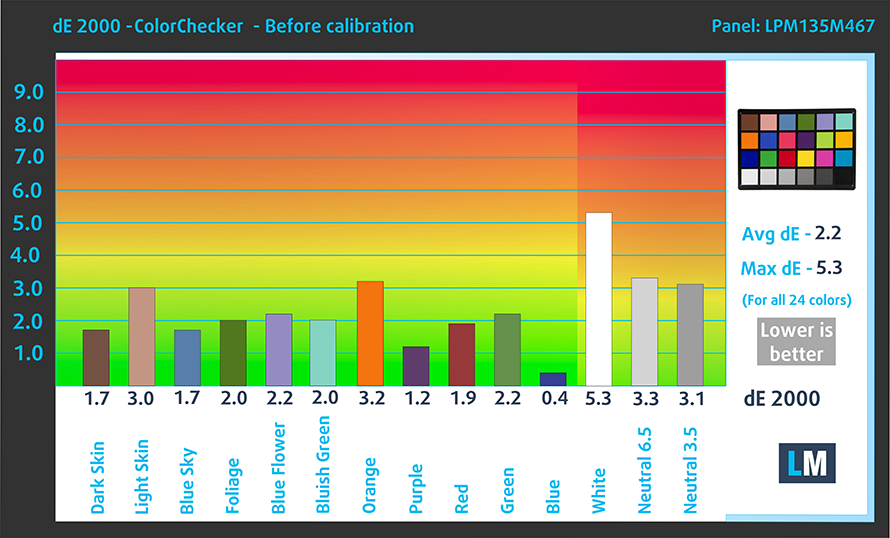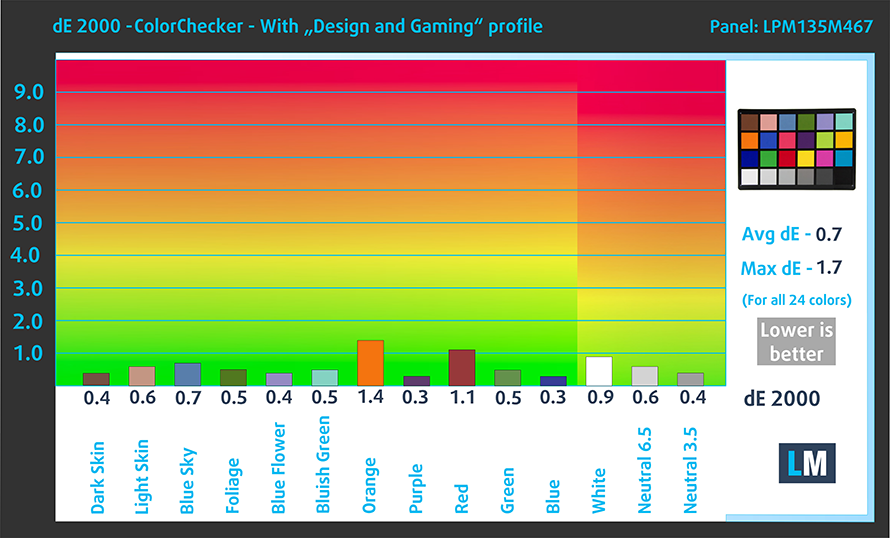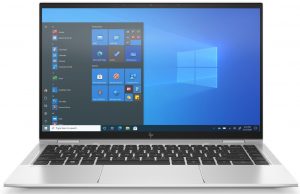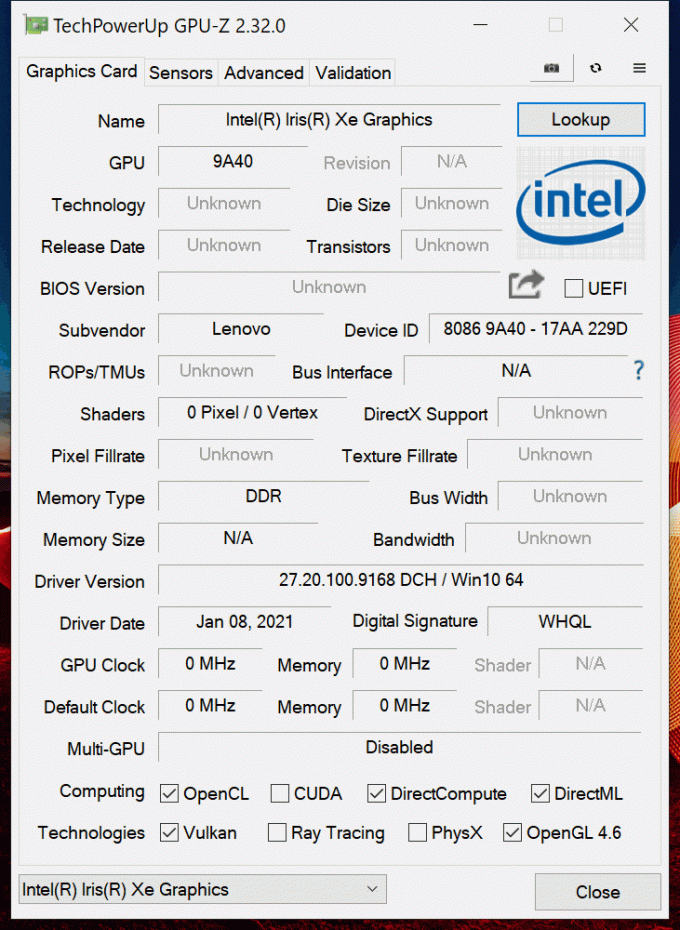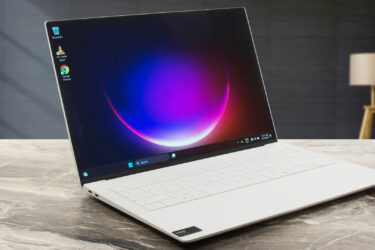Lenovo ThinkPad X1 Titanium Yoga Gen 1 review – exploring new materials
 Lenovo has produced a next-level product in the face of the ThinkPad X1 Titanium Yoga Gen 1. If you are not acquainted with the ThinkPad brand, the X1 is something like the flagship series. It includes devices like the Carbon and the Extreme. Like the former, the name of today’s notebook reveals one of the materials used for the build. Yes, Lenovo was able to put titanium in their device. And more precisely – on its cover (although they don’t specify whether it is the lid, base, or bottom cover).
Lenovo has produced a next-level product in the face of the ThinkPad X1 Titanium Yoga Gen 1. If you are not acquainted with the ThinkPad brand, the X1 is something like the flagship series. It includes devices like the Carbon and the Extreme. Like the former, the name of today’s notebook reveals one of the materials used for the build. Yes, Lenovo was able to put titanium in their device. And more precisely – on its cover (although they don’t specify whether it is the lid, base, or bottom cover).
Now, this has enabled Lenovo to do something spectacular. The entire profile of the notebook measures only 11.5mm. This is tablet territory. Of course, this required some sacrifices on the cooling, thus the device comes with a 9W Tiger Lake chip, similar to that of the ThinkPad X1 Nano.
With that said, the line between a 2-in-1 laptop and a full-blown tablet is pretty washed out. Many people were wondering if the iPad Pro could become a complete laptop replacement. In the same tone – we are curious if the ThinkPad X1 Titanium Yoga Gen 1 can be perceived as a tablet.
A really helpful feature here would be the display. It is a 13.5-inch IPS unit with 2256×1504 resolution. This means it has a 3:2 aspect ratio. Ultimately, it is difficult to find the specific target group for this device, as it is pretty expensive, but its optional 5G connectivity makes it perfect for work on the go.
You can check the prices and configurations in our Specs System: https://laptopmedia.com/series/lenovo-thinkpad-x1-titanium-yoga-gen-1/
Contents
Specs Sheet
- Visualizza
- 13.5”, 2K (2256 x 1504), IPS
- HDD/SSD
- fino a 2000GB SSD
- Slot M.2
- 1x 2242 M.2 NVMe slot Vedi foto
- RAM
- up to 16GB
- OS
- Windows 11 Pro, Windows 11 Home, Windows 10 Home, Windows 10 Pro
- Batteria
- 44.5Wh
- Materiale del corpo
- Carbon, Magnesium alloy (+ Titanium)
- Dimensioni
- 297.5 x 232.7 x 11.5 mm (11.71" x 9.16" x 0.45")
- Peso
- 1.15 kg (2.5 lbs)
- Porte e connettività
- 2x USB Type-C
- Thunderbolt 4
- Wi-Fi
- 802.11ax
- Bluetooth
- 5.0
- Jack audio
- 3.5mm Combo Jack
- Caratteristiche
- Lettore di impronte digitali
- Telecamera web
- HD + IR with webcam privacy shutter
- Tastiera retroilluminata
- Microfono
- 4x 360-degree Microphones
- Altoparlanti
- 2x Up-firing Speakers, Dolby Atmos
- Unità ottica
- Fessura del blocco di sicurezza
Tutti Lenovo ThinkPad X1 Titanium Yoga Gen 1 configurazioni
What’s in the box?
Inside the package, we found some paper manuals and a 65W power brick. Also, some units should receive a Lenovo Precision Pen.
Design and construction
As we said, the laptop boasts an impressive 11.5mm profile. To achieve this, Lenovo has chosen a set of premium-quality materials. This includes titanium and carbon, while the chassis is made out of magnesium. Due to its 3:2 aspect ratio, the footprint looks pretty big for a 13-inch product, but the weight is only 1.15 kilos for a Wi-Fi-only version, and 1.18 kilos for an LTE/5G unit. It’s worth mentioning, that despite its slim profile, the laptop is pretty rigid, although we would advise against bending it too much.
Opening the lid here is not possible with one hand. On the other hand, the 360° hinge brings the display to a full turn, where it stands almost flat, with no movement when you’re using it, which is good. Here, you can see the almost square look of the screen. It has very slim side bezels, and more visible top and bottom ones. The former houses an HD camera with an IR face recognition sensor. Furthermore, the WWAN version packs a proximity sensor, as well.
Next, we see the base. Its coating is pretty resistant to fingerprints. Speaking of which, the only thing that will keep your fingerprint is the reader, placed in the top right corner of the machine. As for the keyboard, it has a surprisingly long key travel (although pretty average if we don’t consider the thickness of the device). It’s interesting that the feedback from every key is tactile. Except for the space bar, though, which is weirdly mushy. Thankfully, the unit is spill-resistant.
As a proper ThinkPad, it has a TrackPoint (or more appropriately – a Red Nipple), which works together with a set of three buttons placed right above the touchpad. Respectively, the latter features a Mylar surface, which delivers a smooth gliding experience. The tracking is also great. One of the features of this device that may slide under the table is the clicking mechanism of the touchpad. Or the lack thereof. Instead, the manufacturer has implemented a solution similar to that on a MacBook, which includes a haptic motor. This is revealed when you turn the laptop off and try to use the touchpad. Clicking it does absolutely nothing. Turn it back on, and you can now feel a gentle, responsive click. This means it works pretty well (or at least as intended).
Surrounding the keyboard, there are two 2W Dolby Atmos-certified speakers. This leaves the bottom panel only with a ventilation grill, placed right beneath the fan. Hot air, respectively, is exhausted from a tiny vent on the back. It is interesting to see if the super tiny feet are going to suffocate the already impotent fan.
Ports
Unfortunately, the I/O on this device is pretty limited. On the left side, there are two Thunderbolt 4 connectors and a SIM card tray. Respectively, the right side houses an audio jack and a power button.
Disassembly, upgrade options and maintenance
Accessing this laptop’s internals is pretty easy. Just undo all 6 captive Phillips-head screws, and pry the bottom panel with a plastic tool or a guitar pick.
Despite its weird shape and large footprint, the battery has a capacity of only 44.5Wh. To take it out, you have to remove a ton of screws and mind the cables that run around it.
Unsurprisingly, the memory is soldered to the motherboard. You can get the laptop with either 8 or 16GB of LPDDR4x RAM working in dual-channel mode. Respectively, the storage options include only one M.2 2242 PCIe x4 slot.
Even though this machine has a super slim profile, Lenovo has still managed to put a fan on it. The rest of the cooling setup comprises one thin heat pipe for the CPU, and one that dissipates the heat from the VRMs and the memory chips.
Display quality
Lenovo ThinkPad X1 Titanium Yoga Gen 1 in the configuration we tested has a touchscreen IPS display, model number LPM135M467 (LEN4171). Its diagonal is 13.5″ (34.3 cm), and the resolution – 2256 x 1504p. Additionally, the screen ratio is 3:2, the pixel density – 201 ppi, their pitch – 0.13 x 0.13 mm. The screen can be considered Retina when viewed from at least 43 cm (from this distance, the average human eye can’t see the individual pixels).
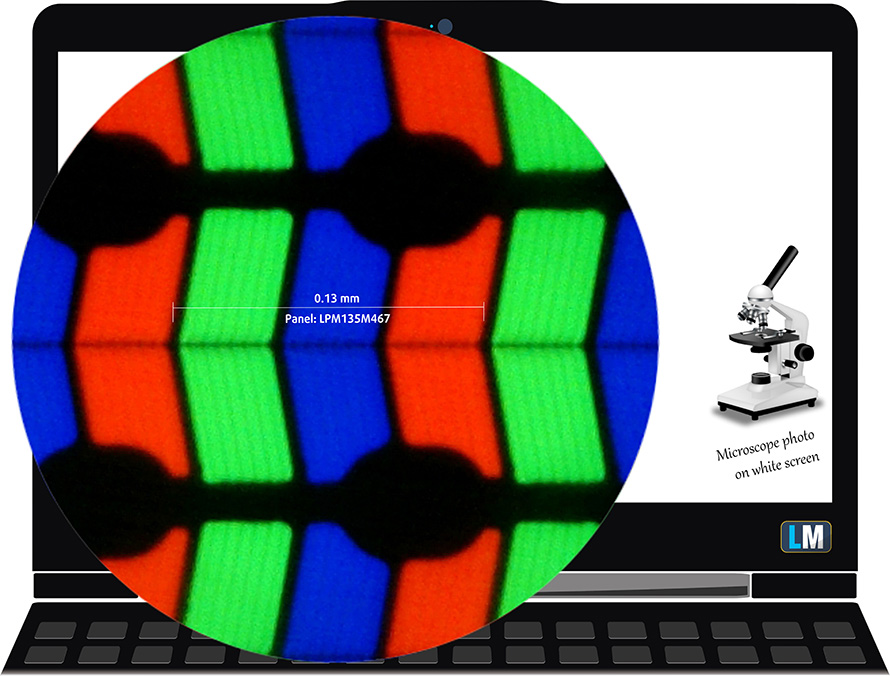
Its viewing angles are excellent. We have provided images at 45 degrees to evaluate quality.

The maximum measured brightness is 467 nits (cd/m2) in the middle of the screen and 439 nits (cd/m2) average across the surface with a maximum deviation of 17% in the bottom left corner. The Correlated Color Temperature on a white screen and at maximum brightness is 6400K (average) – slightly warmer than the 6500K optimum for sRGB.
In the illustration below you can see how the display performs from a uniformity perspective. The illustration below shows how matters are for operational brightness levels (approximately 140 nits) – in this particular case at 60% Brightness (White level = 141 cd/m2, Black level = 0.085 cd/m2).
Values of dE2000 over 4.0 should not occur, and this parameter is one of the first you should check if you intend to use the laptop for color-sensitive work (a maximum tolerance of 2.0 ). The contrast ratio is very good – 1670:1.
To make sure we are on the same page, we would like to give you a little introduction to the sRGB color gamut and the Adobe RGB. To start, there’s the CIE 1976 Uniform Chromaticity Diagram that represents the visible specter of colors by the human eye, giving you a better perception of the color gamut coverage and the color accuracy.
Inside the black triangle, you will see the standard color gamut (sRGB) that is being used by millions of people on HDTV and on the web. As for the Adobe RGB, this is used in professional cameras, monitors, etc for printing. Colors inside the black triangle are used by everyone and this is an essential part of the color quality and color accuracy of a mainstream notebook.
Still, we’ve included other color spaces like the famous DCI-P3 standard used by movie studios, as well as the digital UHD Rec.2020 standard. Rec.2020, however, is still a thing of the future and it’s difficult for today’s displays to cover that well. We’ve also included the so-called Michael Pointer gamut, or Pointer’s gamut, which represents the colors that naturally occur around us every day.
The yellow dotted line shows Lenovo ThinkPad X1 Titanium Yoga Gen 1’s color gamut coverage.
Its display covers 99% of the sRGB/ITU-R BT.709 (web/HDTV standard) in CIE1976.

Our “Design and Gaming” profile delivers optimal color temperature (6500K) at 140 cd/m2 luminance and sRGB gamma mode.
We tested the accuracy of the display with 24 commonly used colors like light and dark human skin, blue sky, green grass, orange, etc. You can check out the results at factory condition and also, with the “Design and Gaming” profile.
Below you can compare the scores of Lenovo ThinkPad X1 Titanium Yoga Gen 1 with the default settings (left), and with the “Gaming and Web design” profile (right).
The next figure shows how well the display is able to reproduce really dark parts of an image, which is essential when watching movies or playing games in low ambient light.
The left side of the image represents the display with stock settings, while the right one is with the “Gaming and Web Design” profile activated. On the horizontal axis, you will find the grayscale, and on the vertical axis – the luminance of the display. On the two graphs below you can easily check for yourself how your display handles the darkest nuances but keep in mind that this also depends on the settings of your current display, the calibration, the viewing angle, and the surrounding light conditions.
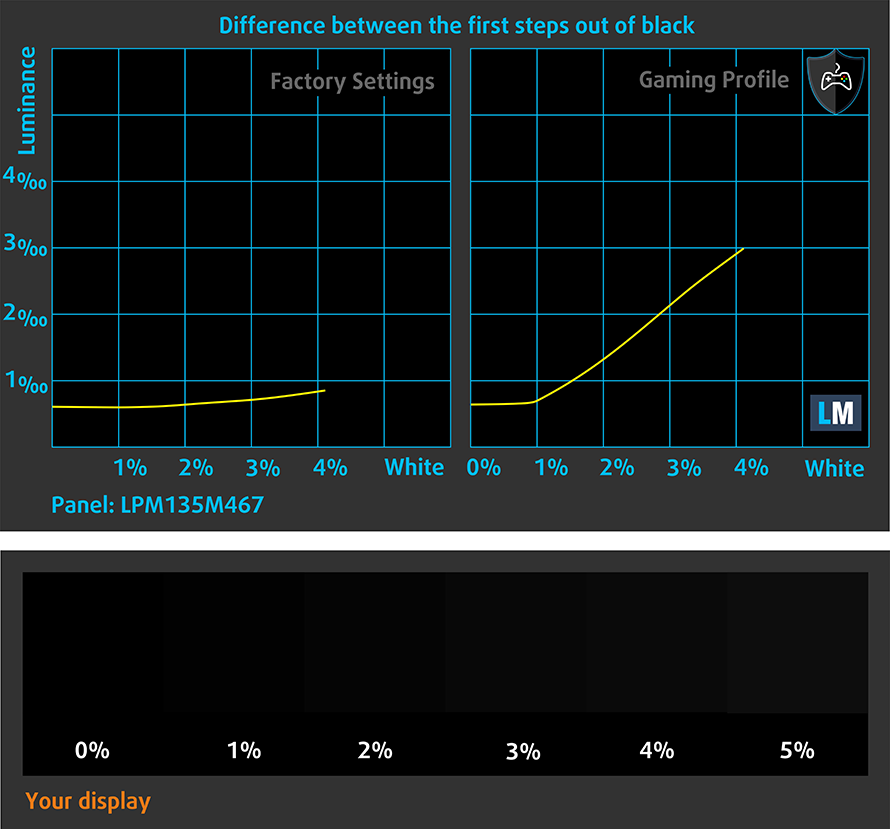
Response time (Gaming capabilities)
We test the reaction time of the pixels with the usual “black-to-white” and “white-to-black” method from 10% to 90% and vice versa.
We recorded Fall Time + Rise Time = 30 ms
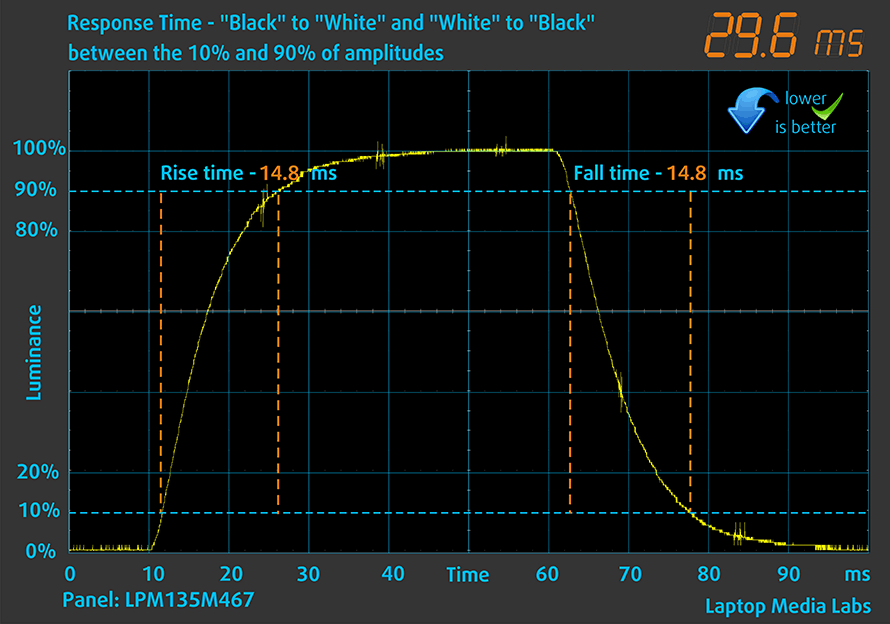
After that, we test the reaction time of the pixels with the usual “Gray-to-Gray” method from 50% White to 80% White and vice versa between 10% and 90% of the amplitude.

Health impact – PWM / Blue Light
PWM (Screen flickering)
Pulse-width modulation (PWM) is an easy way to control monitor brightness. When you lower the brightness, the light intensity of the backlight is not lowered, but instead turned off and on by the electronics with a frequency indistinguishable to the human eye. In these light impulses, the light/no-light time ratio varies, while brightness remains unchanged, which is harmful to your eyes. You can read more about that in our dedicated article on PWM.
Lenovo ThinkPad X1 Titanium Yoga Gen 1’s display doesn’t use PWM for brightness adjustment at any level. This makes it safe for your eyes even after long exposure.
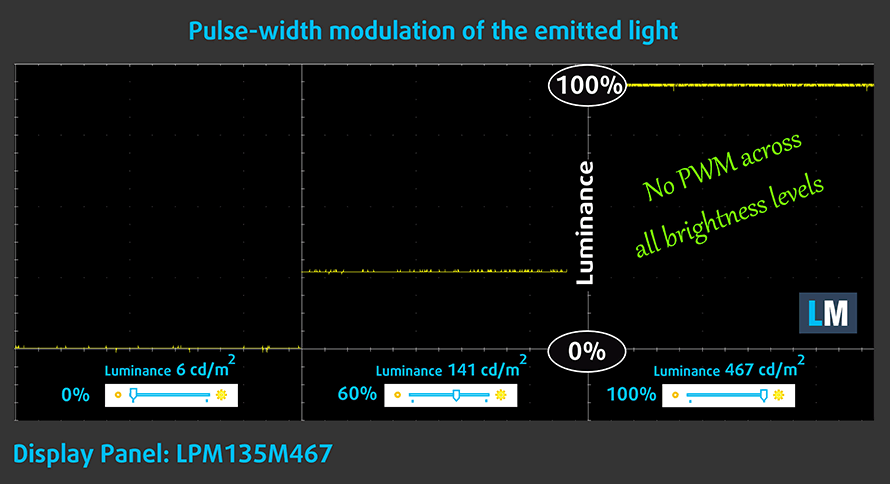
Blue light emissions
Installing our Health-Guard profile not only eliminates PWM but also reduces the harmful Blue Light emissions while keeping the colors of the screen perceptually accurate. If you’re not familiar with the Blue light, the TL;DR version is – emissions that negatively affect your eyes, skin, and your whole body. You can find more information about that in our dedicated article on Blue Light.
Conclusions
Lenovo ThinkPad X1 Titanium Yoga Gen 1’s touchscreen IPS panel has a high resolution, comfortable viewing angles, and high maximum brightness. Moreover, it covers 99% of the sRGB color gamut, and our Gaming and Web design profile delivers quite an accurate color representation. Additionally, its 3:2 aspect ratio allows for more content to be viewed vertically. This is not ideal for multimedia consumption, but if you work with data and numbers, you will definitely find it helpful. Unfortunately, we saw a high nonuniformity in the bottom left corner, which declassifies the panel for Web design use.
Buy our profiles
Since our profiles are tailored for each display model, this article and its respective profile package are meant for Lenovo ThinkPad X1 Titanium Yoga Gen 1 configurations with 13.5″ LPM135M467 (LEN4171) (QHD, 2256 x 1504) IPS panel.
*Should you have problems with downloading the purchased file, try using a different browser to open the link you’ll receive via e-mail. If the download target is a .php file instead of an archive, change the file extension to .zip or contact us at [email protected].
Read more about the profiles HERE.
Oltre a ricevere profili efficienti e rispettosi della salute, comprando i prodotti di LaptopMedia sostenete anche lo sviluppo dei nostri laboratori, dove testiamo i dispositivi per produrre le recensioni più obiettive possibili.

Lavoro in ufficio
Lavoro in ufficio dovrebbe essere usato soprattutto dagli utenti che passano la maggior parte del tempo a guardare pezzi di testo, tabelle o semplicemente a navigare. Questo profilo mira a fornire una migliore distinzione e chiarezza mantenendo una curva gamma piatta (2.20), una temperatura di colore nativa e colori percettivamente accurati.

Design e gioco
Questo profilo è rivolto ai designer che lavorano professionalmente con i colori, e anche per giochi e film. Design and Gaming porta i pannelli di visualizzazione ai loro limiti, rendendoli il più accurati possibile nello standard sRGB IEC61966-2-1 per Web e HDTV, al punto di bianco D65.

Salute-Guardia
Salute-Guardia elimina la nociva Pulse-Width Modulation (PWM) e riduce la luce blu negativa che colpisce i nostri occhi e il nostro corpo. Essendo personalizzato per ogni pannello, riesce a mantenere i colori percettivamente accurati. Salute-Guardia simula la carta, quindi la pressione sugli occhi è notevolmente ridotta.
Ottenete tutti e 3 i profili con il 33% di sconto
Sound
Lenovo ThinkPad X1 Titanium Yoga Gen 1’s speakers produce a sound of good quality. However, the highs have some deviations from clarity.

Drivers
All of the drivers and utilities for this notebook can be downloaded from here: https://pcsupport.lenovo.com/us/en/products/laptops-and-netbooks/thinkpad-x-series-laptops/thinkpad-x1-titanium-type-20qa-20qb/downloads/driver-list
Battery
Now, we conduct the battery tests with Windows Better performance setting turned on, screen brightness adjusted to 120 nits and all other programs turned off except for the one we are testing the notebook with. Here, the 44.5Wh battery lasts for 9 hours and 50 minutes of Web browsing, and 7 hours and 13 minutes of video playback.
Per simulare le condizioni reali, abbiamo utilizzato un nostro script per la navigazione automatica su oltre 70 siti web.
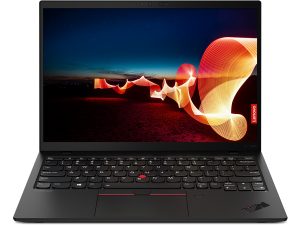
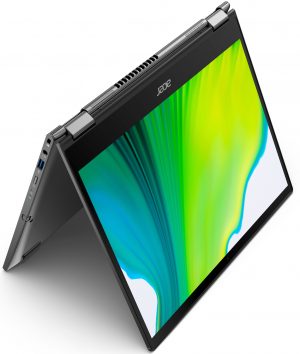
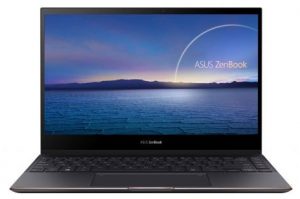
Per ogni test come questo, utilizziamo lo stesso video in HD.



Utilizziamo il benchmark integrato di F1 2017 in loop per simulare il gioco reale.



CPU options
Looking at the specs sheet, we see that this device is sold with a Core i5-1130G7, Core i5-1140G7, Core i7-1160G7, Core i7-1180G7.
I risultati provengono dal test CPU Cinebench 20 (più alto è il punteggio, meglio è)
I risultati provengono dal nostro test di Photoshop (più basso è il punteggio, meglio è)
GPU options
This means the only integrated choices you get are the 80EU and 96EU versions of the Iris Xe Graphics G7.
I risultati provengono dal benchmark 3DMark: Time Spy (Graphics) (più alto è il punteggio, migliore è il risultato).
I risultati provengono dal benchmark 3DMark: Fire Strike (Grafica) (più alto è il punteggio, meglio è)
I risultati provengono dal benchmark Unigine Superposition (più alto è il punteggio, migliore è il risultato)
Gaming tests

| CS:GO | HD 1080p, Low (Check settings) | HD 1080p, Medium (Check settings) | HD 1080p, MAX (Check settings) |
|---|---|---|---|
| Average FPS | 102 fps | 704 fps | 52 fps |

| DOTA 2 | HD 1080p, Low (Check settings) | HD 1080p, Normal (Check settings) | HD 1080p, High (Check settings) |
|---|---|---|---|
| Average FPS | 97 fps | 57 fps | 37 fps |
Temperatures and comfort
Max CPU load
In this test we use 100% on the CPU cores, monitoring their frequencies and chip temperature. The first column shows a computer’s reaction to a short load (2-10 seconds), the second column simulates a serious task (between 15 and 30 seconds), and the third column is a good indicator of how good the laptop is for long loads such as video rendering.
Average core frequency (base frequency + X); CPU temp.
| Intel Core i7-1160G7 (9W TDP) | 0:02 – 0:10 sec | 0:15 – 0:30 sec | 10:00 – 15:00 min |
|---|---|---|---|
| Lenovo ThinkPad X1 Titanium Yoga Gen 1 | 2.20 GHz (B+5%) @ 62°C @ 19W | 2.20 GHz (B+5%) @ 69°C @ 19W | 1.61 GHz @ 67°C @ 12W |
| Lenovo ThinkPad X1 Nano | 3.25 GHz (B+55%) @ 75°C @ 40W | 3.04 GHz (B+45%) @ 97°C @ 34W | 2.35 GHz (B+12%) @ 94°C @ 21W |
Obviously, Lenovo has chosen a meek power limit. Compared to the ThinkPad X1 Nano, where the 9W CPU was acting more like a 15-28W one, the ThinkPad X1 Titanium Yoga Gen 1 makes use of the low TDP. Although the temperatures and the frequency are both pretty low, the fan can be clearly heard.
Comfort during full load
Unfortunately, the fan spins almost all the time and produces a quiet but somewhat annoying sound.
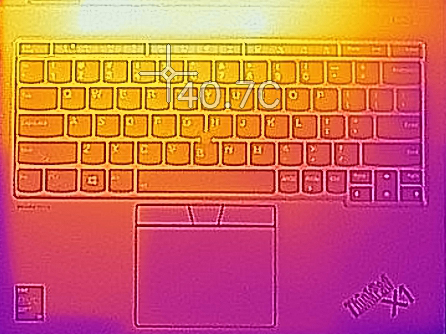
Verdict
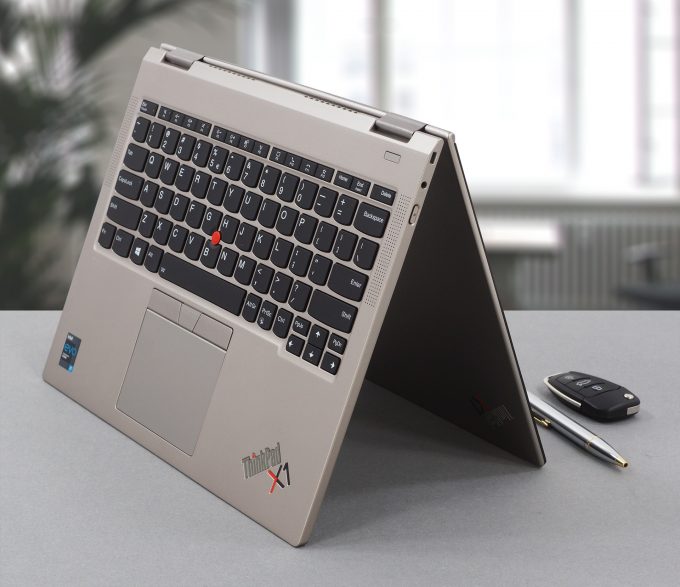 One thing we found really cumbersome is to find the specific target group of people for this notebook. And what is its biggest selling point? Is it the titanium material partially used for the build of this device. In that case, the laptop would be nothing more than a posh alternative. Or is it the 11.5mm profile? By itself, this is not a good enough reason to spend nearly $2000.
One thing we found really cumbersome is to find the specific target group of people for this notebook. And what is its biggest selling point? Is it the titanium material partially used for the build of this device. In that case, the laptop would be nothing more than a posh alternative. Or is it the 11.5mm profile? By itself, this is not a good enough reason to spend nearly $2000.
What about the display? Lenovo ThinkPad X1 Titanium Yoga Gen 1’s touchscreen IPS panel (LPM135M467) has a high resolution, comfortable viewing angles, and high maximum brightness. Moreover, it covers 99% of the sRGB color gamut, and our Gaming and Web design profile delivers quite an accurate color representation. Additionally, its 3:2 aspect ratio allows for more content to be viewed vertically. This is not ideal for multimedia consumption, but if you work with data and numbers, you will definitely find it helpful. Unfortunately, we saw a high nonuniformity in the bottom left corner, which declassifies the panel for Web design use.
Unfortunately, it’s not even the low TDP processor, as the tiny fan of this machine is spinning almost all the time to keep it within reasonable temperatures. So, nothing of its major selling points, can’t be considered as a true reason to buy the laptop.
At the end of the day, the weight falls to the shoulders of the optional 5G connectivity. If you combine all of the aforementioned features with a true wireless connection, that doesn’t require you to be close to a router, everything falls in order. Obviously, this is not the only laptop with a WWAN card out there. However, it has all of the ThinkPad security, it can deliver in terms of performance, and it has an option for 5G. Something that is pretty rare in the laptop world for now.
So, if you need an extremely portable device, that has a premium build, a 3:2 display, and a ton of features, the ThinkPad X1 Titanium Yoga Gen 1 might just be the laptop for you. However, you have to really consider your options out there.
You can check the prices and configurations in our Specs System: https://laptopmedia.com/series/lenovo-thinkpad-x1-titanium-yoga-gen-1/
Pros
- 11.5mm thickness
- Titanium + Carbon + Magnesium alloy
- 99% sRGB coverage, 3:2 aspect ratio, and accurate colors with our Gaming and Web design profile (LPM135M467)
- Doesn’t use PWM for brightness adjustment (LPM135M467)
- 2x Thunderbolt 4 , Wi-Fi 6, optional 5G support
Cons
- Poor upgradeability
- Limited I/O, making dongles and adapters mandatory
- Nonuniform luminance and color (LPM135M467)
